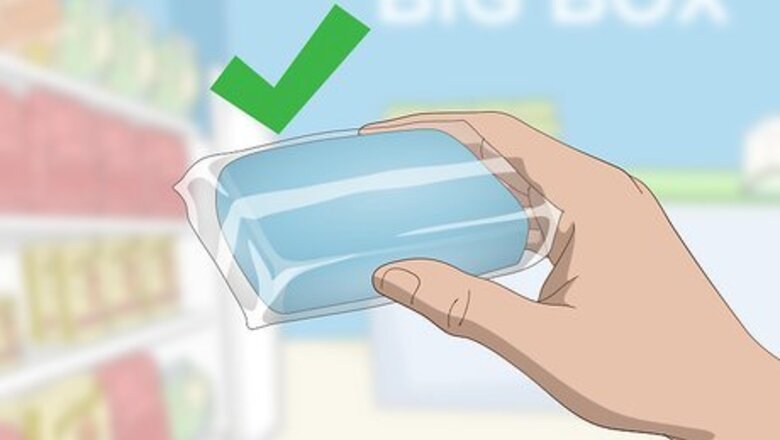
views
Using a Clay Bar on Painted Surfaces
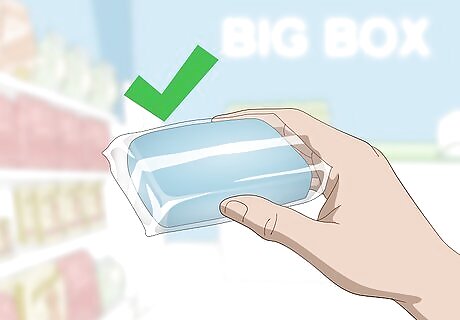
Purchase a clay bar from a big-box store or online site. Clay bars are great for removing overspray from several surfaces. They’re most often used on overspray on cars, but they also work well on glass. Clay bars can be found at big-box stores as well as online and typically cost $5-$20 USD, depending on how many are in a pack. You’ll want a lubricant to go along with your clay bar. Some clay bar packs come with a spray, or you can use a simple auto body or glass cleaner, or even just soap and water.
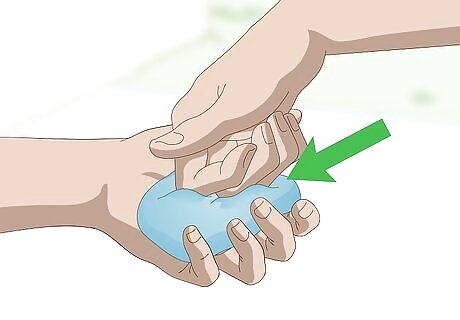
Create a clean surface with your clay bar. If your clay bar is brand new, simply bend and twist it around to make it a little softer. If your clay bar isn’t new, twist it around in your hands until you’ve created a clean surface. You can reuse the clay bar until you no longer have a clean surface — if you’re twisting it around in your hands and still see dirt, it’s time to replace the bar. Always keep your clay bar in a container when it isn't in use. If dirt or debris gets into the clay bar, it will scratch your surface when you go to use it.
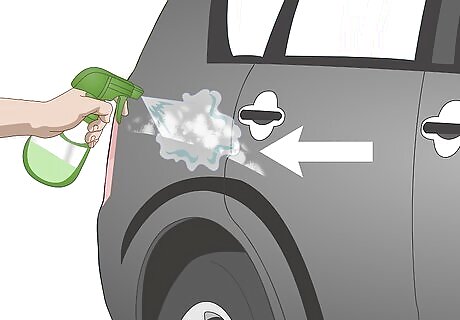
Lubricate the surface containing overspray. Before using the clay bar, you’ll need to wet the surface with overspray on it. Depending on the type of surface you’re cleaning, you should use an auto body cleaner, glass cleaner, or even just soap and water. Spray a cleaner onto the surface or use a damp cloth to ensure the overspray spot is well-lubricated.
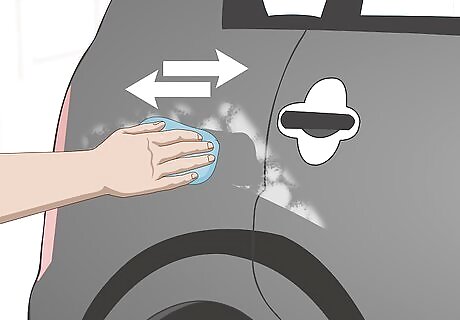
Rub the clay bar over the overspray. Begin rubbing the clay bar onto the overspray. You’ll feel the friction between the overspray and the clay, which means the clay bar is working to remove the spot. Once the surface starts to feel smooth and you don’t feel the friction anymore, you’ve gotten the overspray off.
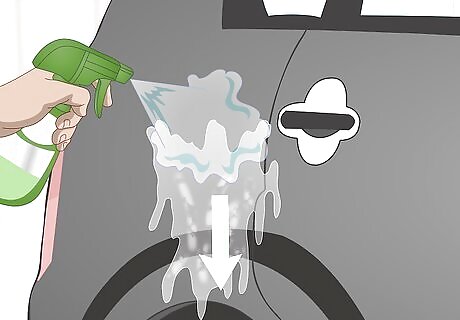
Use a spray cleaner to wipe off any extra residue. Spray regular glass cleaner or auto body cleaner onto the surface where you’ve just removed the overspray. Use a clean rag to wipe the spot, removing any extra paint or residue from the removal process.
Scraping Paint off Glass with a Razor Blade

Boil 1 cup (240 ml) of white vinegar in a pot. Pour 1 cup (240 ml) of white vinegar into a pot or pan and wait for it to come to a boil. Boiling the white vinegar should only take a few minutes.
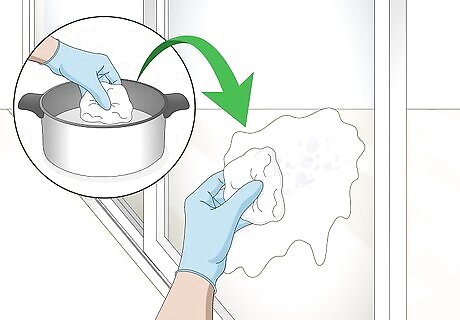
Dip a clean rag into the vinegar and wet the overspray spots. Dip a clean rag into the white vinegar carefully, making sure that it’s wet but not completely saturated. Rub the overspray spots with the rag. The hot white vinegar helps to loosen the overspray from the glass surface. Wear rubber gloves to prevent the hot vinegar from hurting your hands. Some of the overspray may come right off after you rub, while other spots may still stick, which is OK.

Fill a bowl with warm water and soap. Find a small bucket or bowl with warm water. Pour a few squirts of soap into the water, or enough to make it sudsy. Dish soap is ideal, but you can also use hand soap as an alternative.
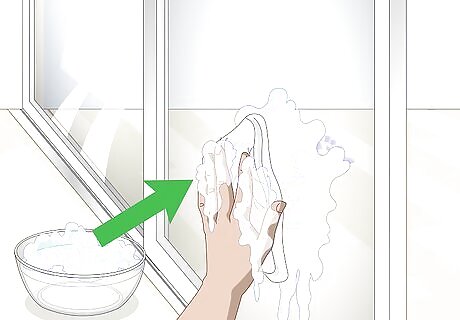
Wet the overspray spots with a sudsy rag. Dip a clean rag into the sudsy water and wet the overspray spot. The soapy water should coat the surface and will help prevent it from being scratched by the razor blade.
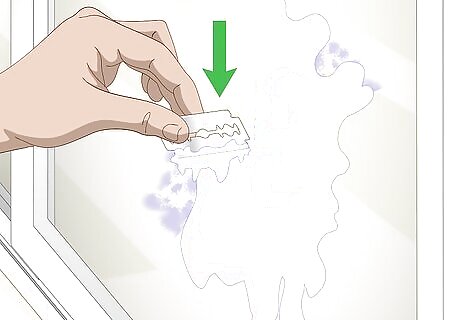
Scrape the overspray off with a new razor blade. Find a razor blade — a new one is best, but as long as it isn’t dull or caked with dirt, it should work — and position it on the overspray surface at a 45 degree angle. Scrape the overspray off carefully in a slow motion, making sure to keep the razor blade at an angle to prevent the surface from being damaged. Wet the overspray spot with the sudsy cloth if it dries out before you’re able to use the razor blade.
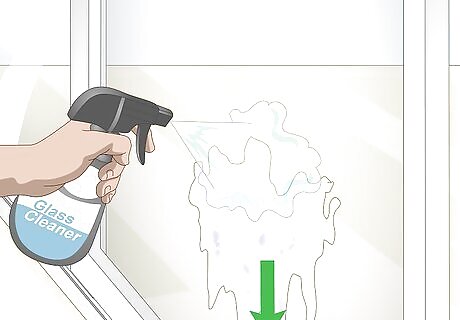
Spray the glass with a glass cleaner to clean off any residue. Spray a few squirts of glass cleaner onto the surface that you just scraped. Use a clean rag or paper towel to wipe off any extra paint or dirt, ensuring your glass is clean and dry.
Removing Latex Paint with Rubbing Alcohol
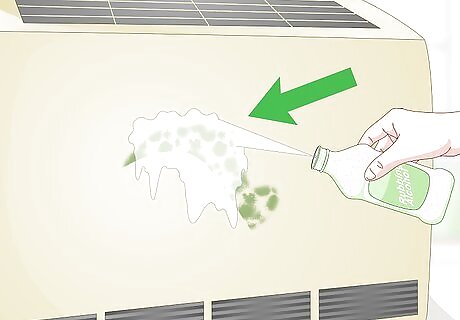
Pour a little rubbing alcohol onto the latex paint overspray. Latex paint can be removed using rubbing alcohol. Pour a little rubbing alcohol onto the overspray spot — how much rubbing alcohol you use will depend on how big the overspray area is, but you should create a small puddle of rubbing alcohol that covers the overspray in a thin layer.

Wait for the rubbing alcohol to dissolve the paint. Let the rubbing alcohol sit so that it has time to break up the paint. This should only take a few minutes, and sometimes waiting just 30 seconds will do the job.

Wipe the rubbing alcohol off of the surface with a clean paper towel. Once the rubbing alcohol has absorbed into the overspray, use a clean paper towel or rag to wipe it up off the surface. The overspray should wipe off completely after being treated with rubbing alcohol. However, you can use a scraper to gently scrape off any overspray spots, if necessary.
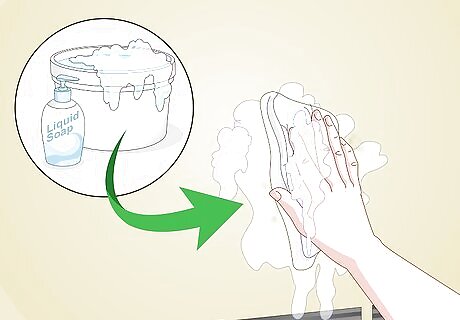
Use soap and water to remove any excess rubbing alcohol or residue. For a final clean up, dip a clean rag or paper towel in soapy water. Use the rag to wipe down the surface that had overspray on it, making sure that you remove any excess residue and rubbing alcohol. Dry the surface thoroughly.
Getting Rid of Spray Paint Overspray
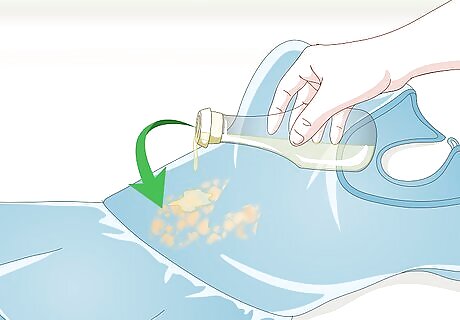
Use olive oil to remove spray paint from fabric. If overspray got onto a piece of fabric, lay the fabric flat on a surface. Apply a few drops of olive oil to the part of the fabric containing the overspray — a dropper would work best, but you can also just use a small spoon. Wait 4 minutes while the olive oil soaks into the fabric, and then scrape the overspray off with a plastic putty knife. To make sure you get the olive oil out of the fabric, use a rag dipped in turpentine and wipe the area. Wash the fabric with dish soap once you're done.
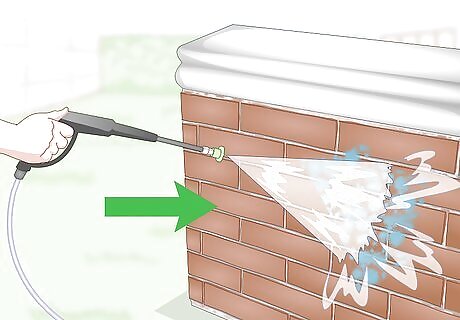
Remove overspray from brick and cement using a pressure washer. Since brick and cement are strong enough to withstand the blast, use a pressure washer to get as much of the spray paint off as you can. Put lacquer thinner on the overspray spots before using a wire brush to scrape the spray paint off. Pressure-wash any remaining residue off.
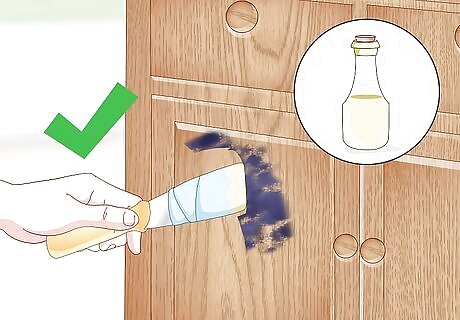
Wrap a rag around a putty knife to clean off wood, plastic, fiberglass, or vinyl. Find a clean rag and drop a few drops of olive oil onto it. Using the rag, wipe the overspray spot with olive oil. Now you can wrap the rag around the working-end of a plastic putty knife, scraping the overspray off. Putting the olive oil-dipped rag around the scraper will ensure you don't scratch your surface while also getting the job done.




















Comments
0 comment